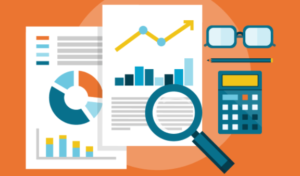Table of Contents
Maintaining the quality of your data is essential to the success of your business. If you don’t have accurate, reliable data, you can’t make informed decisions about where to allocate your resources or how to improve your products and services.
This article will discuss some resources that you can use to keep track of your data quality. We’ll also provide tips from Databand.ai on how to improve the quality of your data to make the most informed decisions possible for the future of your business.
What Is Data Quality?
Data quality can be defined in several ways, but generally, it refers to the accuracy and completeness of your data. It’s essential to track the quality of your data over time to identify any issues and take steps to address them.
There are several different ways to track data quality, which we will discuss in more detail below.
One way to think about data quality is in terms of the “Five Vs”:
Volume: The amount of data you have.
Velocity: The speed at which new data is generated.
Variety: The different types of data you have (e.g., text, images, numerical).
Veracity: The accuracy and completeness of your data.
Value: The usefulness of your data.
It’s essential to track all of these factors over time so that you can identify any issues and take steps to address them.
Different Ways You Can Track Data Quality
There are some different ways that you can track data quality. Here are some of the most common:
Data profiling
This is a process of examining your data to identify issues such as invalid values, missing values, etc. Data profiling can be done manually or with automated tools.
Data cleansing
This is the process of fixing errors in your data to meet the requirements for quality (e.g., accuracy, completeness, etc.). Data cleansing can be done manually or with automated tools.
Data validation
This is the process of verifying that your data meets the requirements for quality (e.g., accuracy, completeness, etc.). Data validation can be done manually or with automated tools.
Data auditing
This is the process of examining your data to identify issues such as errors, omissions, etc. Data auditing can be done manually or with automated tools.
There are many different ways to track data quality, and which one you use will depend on your specific needs. However, all of these methods can be useful in ensuring that your data is of high quality to make informed decisions about your business.
How to Get Started Tracking Your Data Quality
Now that we’ve discussed some of the different ways you can track data quality, let’s talk about getting started. If you’re not already tracking the quality of your data, there are a few things you need to do to get started.
First, you need to establish your goals for tracking data quality. What do you hope to accomplish by monitoring the quality of your data? Once you know your goals, you can start to put together a plan for how to track those goals.
There are several different tools and resources that you can use to track data quality. Databand.ai is one such tool that offers many features designed explicitly for monitoring data quality. With Databand.ai, you can:
- Automatically profile your data to identify issues such as invalid values, missing values, etc.
- Automatically cleansing your data to fix errors so that it meets the requirements for quality.
- Automatically validate your data to ensure that it meets the requirements for quality.
- Automatically audit your data to identify issues such as errors, omissions, etc.
The Benefits of Tracking Your Data Quality
There are many benefits to tracking the quality of your data. First, it can help you identify any issues with your data to take steps to address them. Second, it can help you ensure that your data is of high quality to make informed decisions about your business. Finally, it can help you save time and money by avoiding the need to cleanse or validate your data manually.
By tracking your data quality over time, you can ensure that your business decisions are based on accurate information. Implementing a data quality monitoring plan is an essential step in protecting the integrity of your data and ensuring that you make informed decisions about the future of your business.




![1000 Girl Attitude Names for Truecaller ID | UPDATED [Included Boys Names] 1000 Attitude Names for Girls on Truecaller](https://edutechbuddy.com/wp-content/uploads/2025/05/ChatGPT-Image-May-21-2025-11_59_39-PM-1-150x150.png)








![1000 Girl Attitude Names for Truecaller ID | UPDATED [Included Boys Names] 9 1000 Attitude Names for Girls on Truecaller](https://edutechbuddy.com/wp-content/uploads/2025/05/ChatGPT-Image-May-21-2025-11_59_39-PM-1.png)